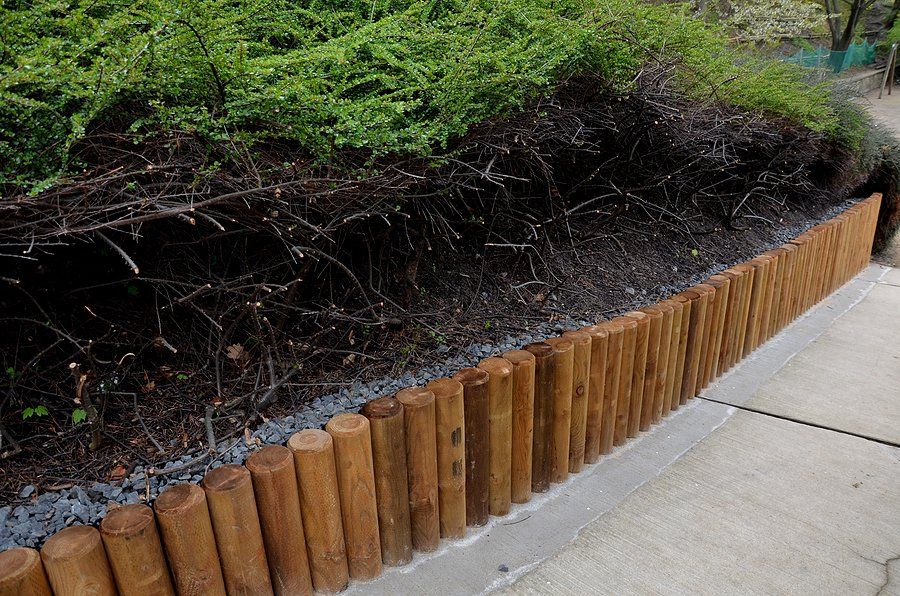Wood Retaining Walls
Wooden retaining walls are both inexpensive and aesthetically pleasing. When used appropriately, nothing else compares to the way a retaining wall made of wood melds into its surroundings. By matching the stain of a log or cedar-wrapped home, it helps to extend the aesthetic of the property's construction materials into the surrounding environment. They are especially stunning in the forest garden because they are made from the same trees that populate the space.
Basic Wood Retaining Wall Explained
Commonly, the height of a wood retaining wall is three feet or less. There are two standard building approaches, and each has its place in specific contexts. A concrete footing supports vertical stanchions, while the walls are built out of horizontal planks of wood, often 2 by 6. This is a common material for our team to use when constructing elevated planters. Large timbers, typically 6 by 6, are stacked and strengthened with steel rods through holes bored all the way to grade in the alternative approach. Our wood Retaining wall solutions are constructed with high-quality wood, sealed properly, and treated with preservatives to ensure longevity. The biggest flaw is the wood itself, which can rot when exposed to the ground for long periods.
Wood Retaining Wall Benefits
There are numerous positive outcomes that result from constructing a wood retaining wall. The natural beauty of the wood used in retaining walls is unmatched in its ability to enhance the aesthetic value of the structure. Wood is an attractive material that can be used to enhance the aesthetic value of a garden in a number of ways. Wood retaining walls are less expensive than those made from concrete or steel because timber is a wholly natural commodity. Wood also has the added benefit of being simple to refinish if you ever get tired of the current color scheme. No concrete or mortar is required, making installation a breeze.
Common Wood Types for Retaining Walls
The Wood used in retaining walls can be chemically treated to make them waterproof. Some of the most common wood choices for retaining walls are naturally resistant to decay. They should also be immune to fungus and insect attacks. Some of the ideal wood species for use in constructing retaining walls include Cedar. Cedar's inherent oils make wood exceptionally resilient against rot, insects, and moisture. In addition to being incredibly durable, this remarkable wood also resists drooping and warping exceptionally well. Cypress is another sturdy and solid wood that lasts a long time without warping or splitting. Due to its durability and resistance to decay and moisture, it can be used in structurally demanding applications.
Why Choose Wood for your Retaining Wall Solution
Despite the rise in popularity of other materials, wooden retaining walls still remain a common choice among landowners due to the natural aesthetic they offer at a reasonable cost. A wooden retaining wall not only keeps your sloped landscape from collapsing but also adds an incredible natural charm that can make your landscape very attractive. Using wood for retaining walls and décor design purposes is a surefire method to wow guests and family members. Wooden retaining walls are extremely long-lasting and can serve their purpose for decades with the right care and maintenance.
